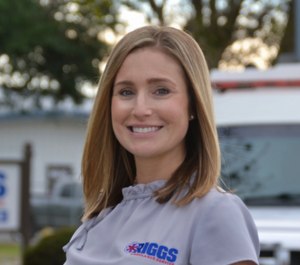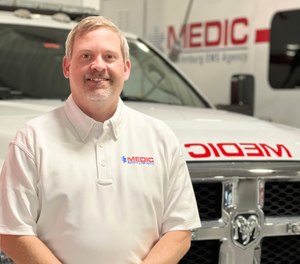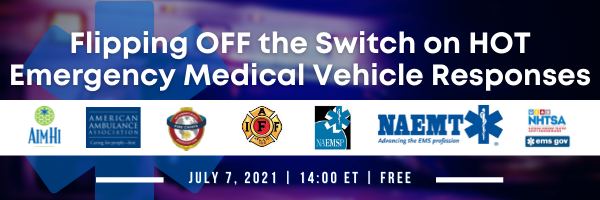EMS.gov Webinar | EMS Harm Reduction and SUD Treatment
|
|
|
|
|
|
|
|
|
|
|
|
On Wednesday, December 6, 2023, the Department of Health and Human Services (HHS) Office of Intergovernmental Affairs (IEA) will host a webinar on healthcare sector cybersecurity from 4:30 p.m. to 5:00 p.m. EST. HHS IEA stated speakers will discuss “the Department’s roadmap for cybersecurity in health care and answer questions on how HHS can help protect patient safety, secure our hospitals, and improve cyber resiliency in health care.”
HHS IEA indicated the event will feature the following speakers:
Registration for the event can be found at: Webinar Registration.
March 15th // 12-1pm ET
The COVID-19 pandemic has had a significant impact on the healthcare system and has highlighted the need for healthcare reform. As the world moves forward from the pandemic, it is likely that the future of healthcare will be shaped by the need for cost containment while continuing to shift the healthcare delivery system to a more value-based care model.
For the past three years, we have seen new innovative approaches to healthcare delivery including the rapid adoption of telemedicine, and it is expected that this trend will continue in the post-pandemic world. Reimbursement reform continues to be an important issue for Emergency Medical Services (EMS) systems, as it affects their ability to provide high-quality care to patients. Despite the disruption that we have seen for the last three years, the EMS industry has continued to push forward with new innovative approaches to service delivery including the expansion of community paramedicine programs and the implementation of alternative programs like the Emergency Triage, Treat, and Transport (ET3) model. During this session, the panelists will discuss the current healthcare landscape, including what innovative programs may be here to stay and what it means for EMS Systems.
Jose G. Cabañas, MD, MPH, FAEMS
President, NAEMSP
Jonathan Oberlander, PhD
Professor & Chair of Social Medicine and Professor of Health Policy & Management
University of North Carolina – Chapel Hill
Paul Hinchey, MD, MBA, FAEMS
COO for University Hospitals in Cleveland, Ohio
Larry McMillan, MHA
Chief Compliance Officer & ET3 Project Lead, Wake County EMS
Randy Strozyk, MBA
President, American Ambulance Association
Lekshmi Kumar, MD, MPH, FAEMS
Medical Director, Grady EMS
Melissa Kroll, MD
Washington University, St. Louis
|
||
|
The National EMS Advisory Council (NEMSAC) will host a virtual meeting on Wednesday and Thursday, May 11-12, 2022. Members of the public can register for the webcast here.
The NEMSAC meets several times each year to discuss issues facing the EMS community. Members of NEMSAC provide counsel and recommendations regarding EMS to the National Highway Traffic Safety Administration (NHTSA) in the Department of Transportation (DOT) and the Federal Interagency Committee on EMS (FICEMS).
Daily agendas include time for NEMSAC subcommittee deliberations in the morning and the publicly webcasted portion of the meetings begin at 1:00 pm ET, Wednesday, May 11, 2022, and 12:00 pm ET on Thursday, May 12, 2022. Items on the agenda include:
Individuals registered for the meeting who wish to address the council during the public comment periods can review the current draft and interim advisories and submit comments in writing to NHTSA.NEMSAC@dot.gov by 5:00 pm ET on May 3, 2022.
Draft advisories:
Interim advisory:
This meeting will be open to the public. NHTSA is committed to providing equal access to this meeting for all program participants. Persons with disabilities in need of accommodation should send their request to Clary Mole by phone at (202) 868-3275 or by email at Clary.Mole@dot.gov no later than May 3, 2022. A sign language interpreter will be provided and closed captioning services will be provided for this meeting through the WebEx virtual meeting platform.
|
Notice of Public Meeting: This notice announces a meeting of the National Emergency Medical Services Advisory Council (NEMSAC).
In late April, CMS will issue a Comparative Billing Report (CBR) on Medicare Part B claims for ambulance ground transport. Use the data-driven report to compare your billing practices with those of peers in your state and across the nation.
CBRs aren’t publicly available. Look for an email from cbrpepper.noreply@religroupinc.com to access your report. Update your email address in the Provider Enrollment, Chain, and Ownership System to ensure delivery.
For More Information:
Limited options for professional growth and the lack of a clear career path are barriers to recruitment, retention and career longevity.
The EMS Burnout Repair Kit series, presented by EMS1 and Zoll, equips individuals at all levels in EMS with tools for dealing with the primary sources of burnout, helping them emerge as better, happier providers and more complete people.
In this installment, a panel comprised of individuals representing different career paths in EMS and leaders from progressive agencies will discuss resources for career advancement and resiliency, how to find the path that is right for you, and how agencies can support providers in advancing their careers.
Join the live discussion, March 1 at 1 p.m. CT
Carly Alley

Carly Alley is the executive director for Riggs Ambulance Service in Merced, California. Earlier in her career, Alley served as a firefighter-EMT in the U.S. Forest Service while earning her paramedic certification. After being hired by Riggs, she transitioned to the agency’s tactical EMS program, where she spent 10 years as the team leader before moving into administration.
Michael Fraley, BS, BA, NRP
-1.png?w=300&format=jpg&quality=87&crop=28%2C0%2C300%2C265)
Michael Fraley has over 25 years of experience in EMS in a wide range of roles, including flight paramedic, EMS coordinator, service director and educator. Fraley began his career in EMS while earning a bachelor’s degree at Texas A&M University. He also earned a BA in business administration from Lakeland College.
When not working as a paramedic or the coordinator of a regional trauma advisory council, Michael serves as a public safety diver and SCUBA instructor in northern Wisconsin.
John (JP) Peterson, MS, MBA

JP Peterson is the newly appointed executive director at Mecklenburg EMS Agency (MEDIC) in Charlotte, North Carolina. He started his career as an EMT in Chicago in 2000 and most recently served as vice president of Florida operations for PatientCare EMS Solutions.
He is licensed as a paramedic in Florida and North Carolina, and holds National Board Certification as an occupational therapist. He has completed Six Sigma Yellow Belt certification and is a graduate of the American Ambulance Association, Ambulance Service Manager Course. JP received the Pinellas County Commissioner, John Morroni Award for first responders in 2013.
JP is a past president of the Florida Ambulance Association. He is a member of the North Carolina Association of EMS Administrators as well as the AAA Bylaws, Professional Standards and Ethics committees.
Tuesday, September 14 from 2-3 pm ET
CMS is hosting a Q&A session about the Medicare Ground Ambulance Data Collection System tomorrow at 2:00pm Eastern.
Do you have questions about the Medicare Ground Ambulance Data Collection System? Join this live Q&A session. You may also send questions in advance to AmbulanceDataCollection@
More Information:
.png) Flipping OFF the Switch on HOT Emergency Medical Vehicle Responses!
Flipping OFF the Switch on HOT Emergency Medical Vehicle Responses!
Recorded July 7, 2021 | 14:00–15:15 pm ET | FREE Webinar
Download Slide Deck | Watch on YouTube
HOT (red light and siren) responses put EMS providers and the public at significant risk. Studies have demonstrated that the time saved during this mode of vehicle operation and that reducing HOT responses enhances safety of personnel, with little to no impact on patient outcomes. Some agencies have ‘dabbled’ with responding COLD (without lights and sirens) to some calls, but perhaps none as dramatic as Niagara Region EMS in Ontario, Canada – who successfully flipped their HOT responses to a mere 10% of their 911 calls! Why did they do it? How did they do it? What has been the community response? What has been the response from their workforce? Has there been any difference in patient outcomes? Join Niagara Region EMS to learn the answers to these questions and more. Panelists from co-hosting associations will participate to share their perspectives on this important EMS safety issue!
Kevin Smith, BAppB:ES, CMM III, ACP, CEMC
Chief
Niagara Emergency Medical Services
Jon R. Krohmer, MD, FACEP, FAEMS
Director, Office of EMS
National Highway Traffic Safety Administration
Team Lead, COVID-19 EMS/Prehospital Team
Douglas F. Kupas, MD, EMT-P, FAEMS, FACEP
Medical Director, NAEMT
Medical Director, Geisinger EMS
Matt Zavadsky, MS-HSA, NREMT
Chief Strategic Integration Officer
MedStar Mobile Integrated Healthcare
Bryan R. Wilson, MD, NRP, FAAEM
Assistant Professor of Emergency Medicine
St. Luke’s University Health Network
Medical Director, City of Bethlehem EMS
Robert McClintock
Director of Fire & EMS Operations
Technical Assistance and Information Resources
International Association of Fire Fighters
Mike McEvoy, PhD, NRP, RN, CCRN
Chair – EMS Section Board – International Association of Fire Chiefs
EMS Coordinator – Saratoga County, New York
Chief Medical Officer – West Crescent Fire Department
Professional Development Coordinator – Clifton Park & Halfmoon EMS
Cardiovascular ICU Nurse Clinician – Albany Medical Center
Ambulance Fleet Tips for Weathering the Chassis Shortage
Webinar | June 23, 2021 | 14:00 ET | Free to AAA Members
The American Ambulance Association and the Commission on Accreditation of Ambulance Services recently reported that a global semiconductor shortage has crippled the production of motor vehicle chassis—including those used by ambulance manufacturers and remounters. Ford Motor Company, which supplies approximately 70% of the ambulance chassis used in the US, halted production in mid-April. The end is not yet in sight, with the shortage of the critically important microchips predicted to run into 2022.
Join ambulance fleet experts from across the country to learn what your EMS agency can do NOW to extend the lifecycle of your vehicles and minimize the impact of the chip and chassis shortage. Additionally, learn how the American Ambulance Association is working to drive federal, state, and local advocacy efforts to ensure that first responders are at the front of the line when production resumes. Don’t miss your chance to learn from ambulance fleet luminaries how they keep their crews rolling, 24/7!
Drew Morrow
Director of Support Services, Pro EMS
Mark Van Arnam
Administrator, CAAS GVS
Maria Bianchi
CEO, American Ambulance Association
Trampus Gaspard
Senior Director of Logistics, Acadian Companies
|
|
|
|

Free Webinar July 7 | 14:00–15:15 ET
HOT (red light and siren) responses put EMS providers and the public at significant risk. Studies have demonstrated that the time saved during this mode of vehicle operation and that reducing HOT responses enhances safety of personnel, with little to no impact on patient outcomes. Some agencies have ‘dabbled’ with responding COLD (without lights and sirens) to some calls, but perhaps none as dramatic as Niagara Region EMS in Ontario, Canada – who successfully flipped their HOT responses to a mere 10% of their 911 calls! Why did they do it? How did they do it? What has been the community response? What has been the response from their workforce? Has there been any difference in patient outcomes? Join Niagara Region EMS to learn the answers to these questions and more. Panelists from co-hosting associations will participate to share their perspectives on this important EMS safety issue!
Kevin Smith, BAppB:ES, CMM III, ACP, CEMC
Chief
Niagara Emergency Medical Services
Jon R. Krohmer, MD, FACEP, FAEMS
Team Lead, COVID-19 EMS/Prehospital Team
Director, Office of EMS
National Highway Traffic Safety Administration
Douglas F. Kupas, MD, EMT-P, FAEMS, FACEP
Medical Director, NAEMT
Medical Director, Geisinger EMS
Matt Zavadsky, MS-HSA, NREMT
Chief Strategic Integration Officer
MedStar Mobile Integrated Healthcare
Bryan R. Wilson, MD, NRP, FAAEM
Assistant Professor of Emergency Medicine
St. Luke’s University Health Network
Medical Director, City of Bethlehem EMS
Robert McClintock
Director of Fire & EMS Operations
Technical Assistance and Information Resources
International Association of Fire Fighters
Mike McEvoy, PhD, NRP, RN, CCRN
Chair – EMS Section Board – International Association of Fire Chiefs
EMS Coordinator – Saratoga County, New York
Chief Medical Officer – West Crescent Fire Department
Professional Development Coordinator – Clifton Park & Halfmoon EMS
Cardiovascular ICU Nurse Clinician – Albany Medical Center
From AIMHI, FirstWatch, and the National EMS Museum | Hosted on Prodigy EMS
|
|
|
|
|
|
|
|
|
|
|
|
|
|
|
|
|
|
|
|
|
|
Sponsored Content from Lytx
Protect Your Brand, Bottom Line and Gain More Visibility into Your Fleet with More Than Just a Map
Free Webinar January 28 at 2:00 ET
Savvy contractors know that GPS fleet management solutions are key for maximizing productivity, efficiency, safety, customer satisfaction, and more. In today’s modern world, they are adding new technology to take those benefits to the next level. Learn how the Lytx Fleet Tracking Map provides immediate fleet activity including geo-fencing, fuel economy, how to calculate stops in a day, and route.